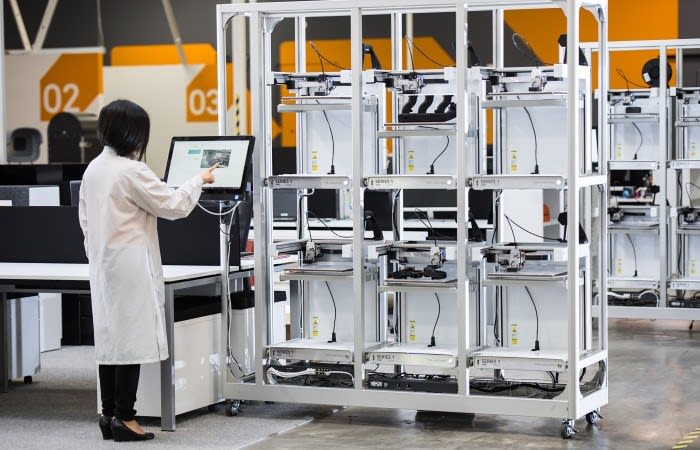
TOOL Spawn in Ocean Solutions Library • 2 yr. ago
Additive Manufacturing's Impact on Maritime Supply Chain
What is Additive Manufacturing(AM)?
Additive manufacturing is a method of making three-dimensional objects by adding material layer by layer. This is different from traditional manufacturing techniques, which typically involve removing material from a larger block or casting material into a specific shape. Additive manufacturing, also known as 3D printing, allows for the creation of complex and customized objects with a high level of precision. The process begins with a digital model of the object, which is sliced into layers, and then the printer builds up the object by adding material one layer at a time until it is complete. Additive manufacturing is used in a variety of industries, including aerospace, healthcare, and automotive, to produce prototypes, tooling, and even final products.
How Additive Manufacturing Can Revolutionize Maritime
The use of additive manufacturing in the shipping industry can revolutionize the way spare parts are procured and managed. With the ability to create parts on demand, shipping companies can significantly reduce their inventory and maintenance costs. AM technology allows for the creation of highly customized parts that are not readily available on the market. This can be a significant advantage for shipping companies that operate specialized vessels or equipment. With 3D printing capabilities on board vessels, shipping companies could potentially manufacture spare parts on the spot, even in remote locations.
By reducing the lead time for spare parts procurement, 3D printing technology can help shipping companies minimize downtime and avoid costly delays. The deployment of 3D printing technology on ships can enable the crew to manufacture critical parts on board, eliminating the need for offloading the vessel for repairs. By producing spare parts on-demand using 3D printing, shipping companies can save money on storage costs and reduce the need for large inventory stockpiles.
The adoption of 3D printing technology in the shipping industry can also have a positive environmental impact by reducing the need for transportation of spare parts and the associated carbon emissions. 3D printing can help reduce waste in the shipping industry by producing parts only when needed, rather than creating excess inventory that may eventually go to waste.
Some Use Cases of Additive Manufacturing in Maritime
Wilhelmsen and Thyssenkrupp join forces for 3D printing in the maritime industry
Wilhelmsen's Marine Products division and Thyssenkrupp have signed a joint venture letter of intent to optimize the production and delivery processes of 3D printed spare parts for the maritime market. With 50% of vessels over 15 years old, the availability of parts is limited, and the fulfillment of orders for maritime spare parts is costly and complicated. Additive manufacturing can disrupt the current model, fabricating suitable components near the vessel location in a matter of weeks or even days. The partnership will establish Wilhelmsen and Thyssenkrupp as leaders in the maritime additive manufacturing fulfillment platform.
DNV and MPA Singapore partner to revolutionize maritime industry with additive manufacturing
DNV has been selected as the primary investigator for the initial stage of a fresh initiative in Singapore aimed at analyzing the possibility of implementing additive manufacturing (AM), also known as 3D printing, in the maritime sector. The Maritime and Port Authority of Singapore (MPA) has initiated a joint industry program (JIP) in which DNV GL will partner with ten member companies of the Singapore Ship Association (SSA) to assess how spare parts produced by 3D printers can assist the capital-intensive sector in reducing expenses and downtime.
The Joint Industry Program (JIP) is aimed at achieving two primary objectives: firstly, to compile a comprehensive list of commonly-ordered parts that are highly feasible for 3D printing, including those that require certification, as well as those that are not suitable for this method. Secondly, the program aims to promote the adoption of additive manufacturing in spare parts management among maritime players, with the ultimate goal of enhancing supply chain optimization. By leveraging the benefits of 3D printing, the maritime industry can streamline their operations, reduce inventory costs, and boost overall efficiency, which would ultimately strengthen Singapore's value proposition as a one-stop shop for port services supporting a diverse ecosystem of shipping lines and maritime companies.
ABS, Sembcorp Marine, 3D Metalforge, and Polar Tankers team up to Explore 3D Printing in Marine Industry

ABS, ConocoPhillips Polar Tankers, Sembcorp Marine Ltd, and 3D Metalforge have collaborated on a joint development project to make additive manufacturing (AM), also known as 3D printing, a practical solution for the marine industry. As part of this initiative, Sembcorp Marine successfully fabricated parts using AM technology and installed them on an oil tanker six months ago. The parts have since been evaluated and confirmed to be functioning effectively, demonstrating the viability of AM for marine industry applications.
The innovative AM project commenced in February 2021, with the production and laboratory testing of functional components fabricated using additive manufacturing technology. These parts were subsequently installed on the Polar Endeavour oil tanker. Following six months of operation, the ship's crew retrieved and examined all components, which were then subjected to a remote survey by ABS to evaluate their performance.
Mr. Simon Kuik, the Head of Research and Development at Sembcorp Marine, expressed his satisfaction with the project's outcome, stating that it bodes well for the implementation of AM in the maritime industry. He emphasized that AM enables Sembcorp Marine to tailor components to meet specific customer requirements while reducing material waste and eliminating supply chain inefficiencies. This strengthens the company's reputation as a comprehensive provider of innovative solutions for the energy, marine, and offshore industries, while also reinforcing its commitment to sustainability.
Wilhelmsen and Ivaldi Group Collaborate on 3D Printed Marine Parts
Wilhelmsen has collaborated with Ivaldi Group to establish a 3D printing facility in the Wilhelmsen Ships Service's Singaporean premises. This local micro-factory, equipped with on-demand production capabilities, is geared towards providing 3D printed components to a select group of partners as part of their early adopter program. This initiative is being implemented in a port that hosts over 100 vessel visits on a daily basis.

Kjell Andre Engen, the Executive Vice President of Marine Products at Wilhelmsen Ships Service, has highlighted that the supply chain expenses for their marine products sales are frequently comparable to or even greater than the cost of goods sold. Engen believes that by partnering with Ivaldi and embracing additive manufacturing technology, they can reduce expenses and minimize their environmental impact while expanding their service capabilities to better serve customers. Wilhelmsen and Ivaldi perceive an excellent opportunity to use new technology and existing infrastructure to transform the current supply chain. Berge Bulk is one of the early customer partners participating in this joint initiative.
According to Sim Teck Siang, the Procurement Manager at Berge Bulk, the maritime spare parts industry faces significant challenges such as long lead times, limited parts availability, and complex logistics. As a company that operates and manages over 50 vessels, Berge Bulk requires customized spare parts to be delivered promptly and efficiently. Siang lauds the impressive capabilities of 3D printing technology, which can produce a wide range of components using diverse materials. They look forward to exploring the increased flexibility of additive manufacturing to create customized designs and produce components on demand via this collaborative program.
Wilhelmsen has partnered with Carnival Maritime, Thome Ship Management, OSM Maritime Group, Berge Bulk, and Executive Ship Management in a project located in Singapore, which is supported by NUS Enterprise and the Maritime and Port Authority of Singapore (MPA).
The ships used in the maritime industry are getting pretty old, and they have been in service for more than a decade. Because of this, there is a lot of demand for parts that are not always available from the companies that originally made the ships. This makes it difficult for ship management agencies to get these parts to the ships quickly, especially if the ships are located far away.
Other Additive Manufacturing Solutions in Shipping Related Lists:
Additive Manufacturing Services for Circular Shipping Solutions
Big Players in Shipping Industry Adopt Additive Manufacturing
Loading...

